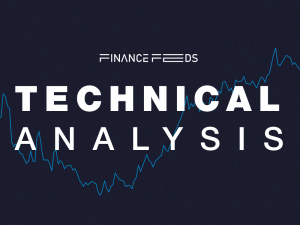Leverage Risk: U.S. Government announces working group
Today, the Financial Stability Oversight Council voted unanimously to release a public update on its review of potential risks to U.S. financial stability that may arise from asset management products and activities and next steps to respond to these potential risks, in the following areas: (1) liquidity and redemption; (2) leverage; (3) operational functions; (4) […]

Today, the Financial Stability Oversight Council voted unanimously to release a public update on its review of potential risks to U.S. financial stability that may arise from asset management products and activities and next steps to respond to these potential risks, in the following areas: (1) liquidity and redemption; (2) leverage; (3) operational functions; (4) securities lending; and (5) resolvability and transition planning.
Jacob J. Lew, US Treasury Secretary and Chairperson of the Council, said: “The Council was created to bring the financial regulatory community together to look across the entire system, ask tough questions, and address potential risks to financial stability before they materialize. Our analysis of asset management products and activities is a crucial piece of that work”
“As financial markets evolve, the nature of potential risks shifts, and we need to be vigilant in monitoring and understanding these changes. The analysis and views in this update harnessed the expertise of the Council members and their staffs, and we look forward to continued engagement with stakeholders as this work moves forward”, he concluded.
The statement goes on saying that Liquidity and Redemption Risk concerns the Council when it comes to pooled investment vehicles, particularly where investor redemption rights and underlying asset liquidity may not match. To address the issues, it is recommended the adoption of robust liquidity risk management practices, establishment of clear regulatory guidelines regarding the ability to hold assets with very limited liquidity, enhanced reporting and disclosures, tools to allocate redemption costs, and additional public disclosure.
Regarding Leverage Risk, and after analyzing data from the SEC’s Form PF, showing relatively small amounts of leverage in many hedge funds but concentrated in larger hedge funds, the Council acknowledges the high complexity of the relationship between a hedge fund’s level of leverage and risk, and whether that risk may have financial stability implications.
Reporting requirements increased transparency, but “does not provide complete information on the economics and corresponding risk exposures of hedge fund leverage or potential mitigants associated with reported leverage levels”, said the statement. “In addition, hedge funds’ major counterparties are regulated by various regulators with different jurisdictions. Therefore, no single regulator currently has all the information necessary to evaluate the complete risk profiles of hedge funds. “
The Council sees the need for further analysis and will be creating an interagency working group for that purpose, to better understand hedge fund activities and further assess whether there are potential risks to financial stability.
“The working group will:
- Use regulatory and supervisory data to evaluate the use of leverage in combination with other factors – such as counterparty exposures, margining requirements, underlying assets, and trading strategies – for purposes of assessing potential risks to financial stability;
- Assess the sufficiency and accuracy of existing data and information, including data reported on Form PF, for evaluating risks to financial stability, and consider how the existing data might be augmented to improve the ability to make such evaluation; and
- Consider potential enhancements to and the establishment of standards governing the current measurements of leverage, including risk-based measures of synthetic leverage.
This group will seek to report its consolidated findings to the Council by the fourth quarter of 2016.”
The Council, headed by US Secretary Jacob J. Lew, will be engaging with industry participants and other stakeholders and will seek to develop a greater understanding of service providers, their operating infrastructure, and the measures used by asset managers and other financial institutions to mitigate potential risks from service providers.
CFTC Chairman Timothy Massad made a public statement in support to the Financial Stability Oversight Council’s publication, saying that while the CFTC do not regulate hedge funds, they together with the SEC, regulate the derivatives markets.
“The first challenge is the metrics we use to measure leverage. As the report notes, we do not yet have a good metric for leverage in this context. We have not yet “connected the dots” between the leverage metrics cited in the report and the amount of underlying risk that it represents. This is evident, for example, with respect to the use of “gross notional exposure.” This metric includes derivatives, but not in a manner that accurately measures risk. It measures notional amount, but does not take into account a variety of factors that affect risk, such as product type, offsetting positions, whether a transaction is cleared, or whether margin is collected. To analyze the implications of leverage, we need to take into consideration these and other critical market structure details”, said Massad.
Massad added that preliminary analysis of hedge funds with the largest derivatives exposures point to cleared derivatives, and extremely low levels of uncleared derivatives, with counterparties typically being large registered swap dealers. “That preliminary review illustrates why more work is needed to refine the data and conduct in-depth analysis”, he said, concluding that the regulatory reforms already taken regarding margin requirements for uncleared swaps and reporting, among others, “taken together with changes in the marketplace, may be contributing to increased derivative activity on the part of hedge funds and other asset management firms.”









